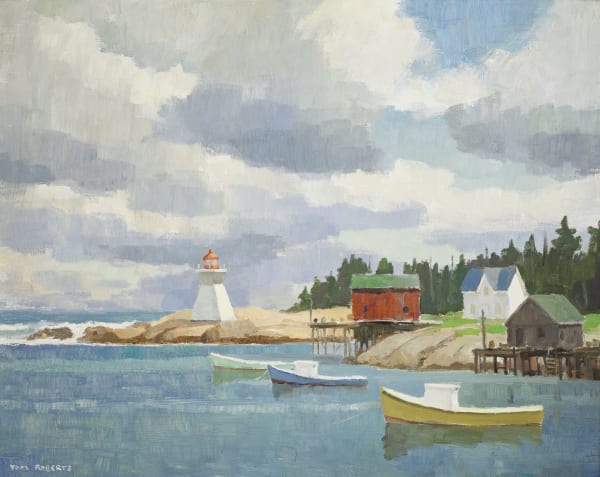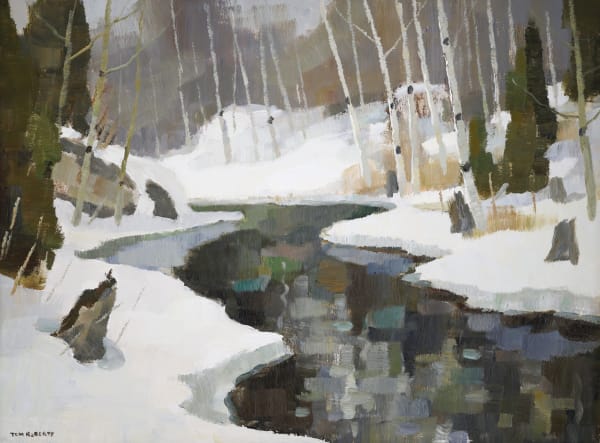Thomas Keith Roberts (1909-1998), a significant figure in Canadian art history, was born in Toronto, Ontario, into a family deeply rooted in the artistic legacy of the renowned Roberts Gallery, founded by his grandfather Samuel Roberts. Encouraged by this rich heritage, Tom Roberts developed a passion for art from an early age, nurtured by the vibrant cultural environment fostered within his family.
 Tom Roberts; Summer Afternoon, Chateau Richer
Tom Roberts; Summer Afternoon, Chateau Richer
His formal art education commenced at Toronto's Central Technical School, where he studied under notable artists such as Peter Haworth, Carl Schaefer, and Charles Goldhamer. Roberts further honed his skills at the Ontario College of Art, learning from respected figures like J.W. Beatty, F.S. Challener, Yvonne McKague Housser and Fred Haines.
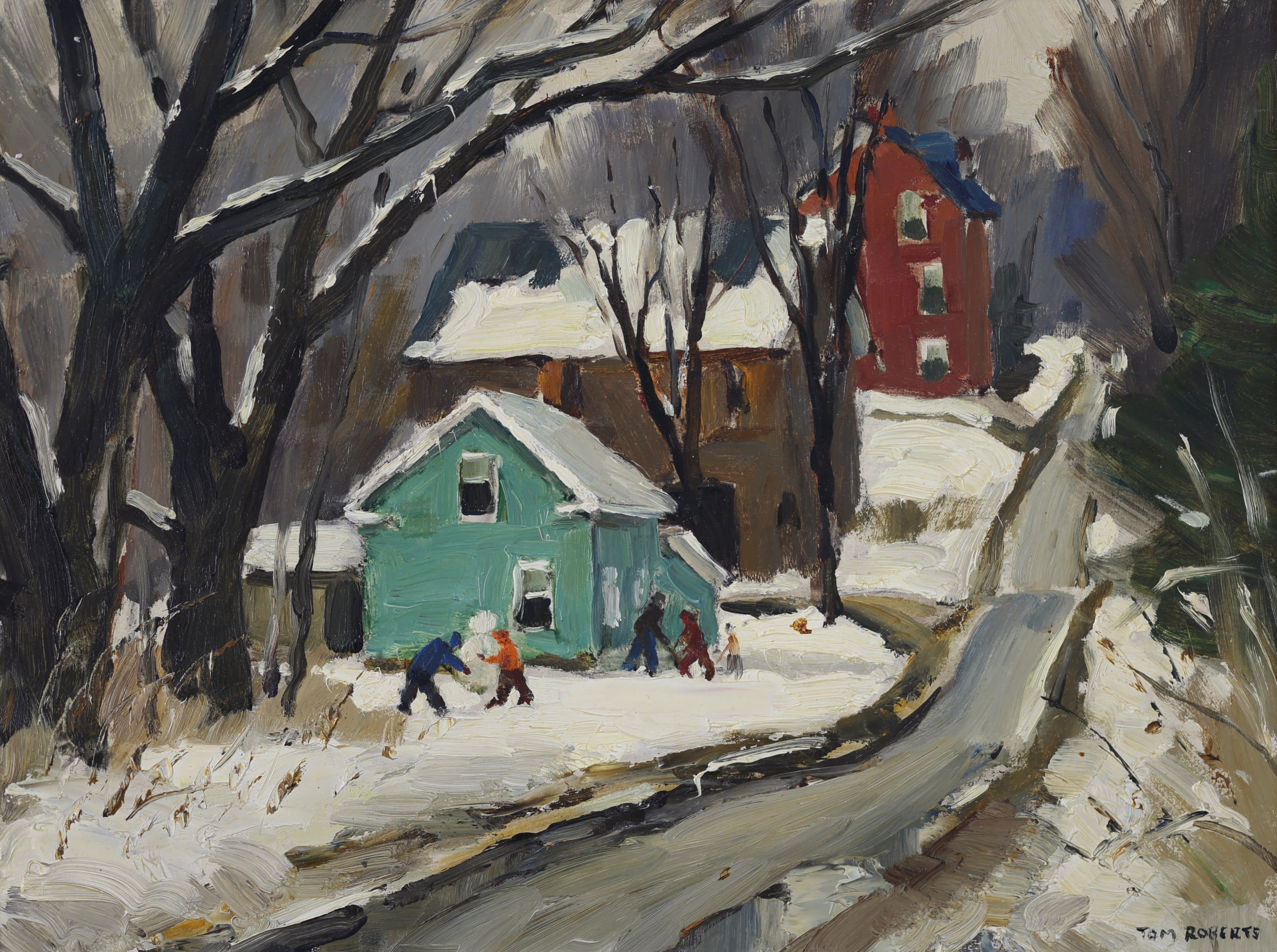
Tom Roberts; Winter Fun
During World War II, Tom Roberts served in the Royal Canadian Engineers, utilizing his artistic talents to document army life through sketches and watercolours. This period not only sharpened his observational skills but also provided inspiration for his post-war artistic endeavors.

Tom Roberts; Lighthouse at Hamilton Bay
Upon returning to civilian life, Roberts embarked on a career as a freelance artist, drawing inspiration from influential art movements such as the Group of Seven and French Impressionism. His paintings, characterized by vivid colours and dynamic compositions, captured the diverse landscapes of Canada, from Northern Ontario to the Maritime provinces.
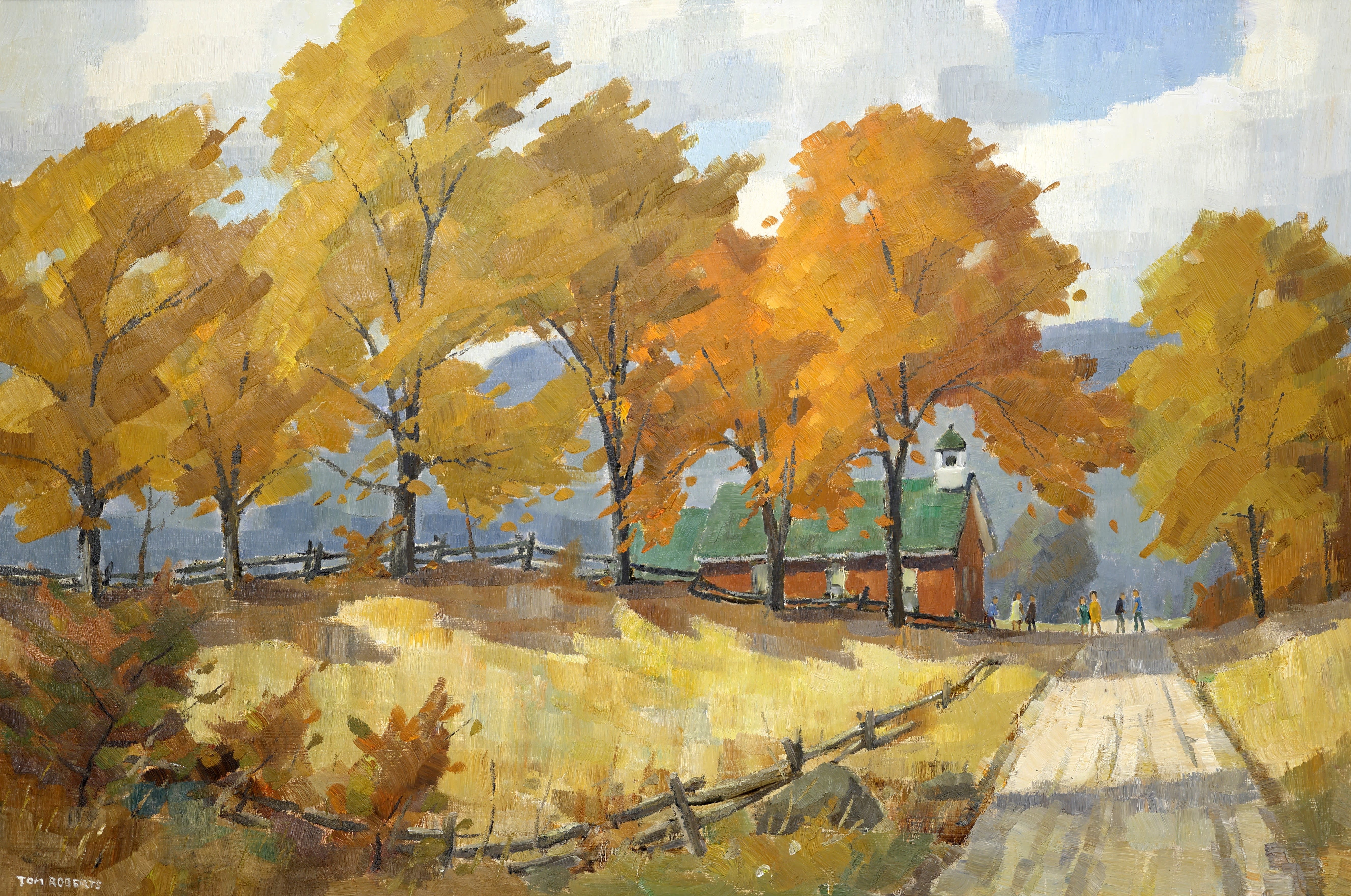
Tom Roberts; The Old Schoolhouse
Roberts' artistic output, enriched by his military experience, documented not only the historical relevance of his service years but also the deep human connections and rugged beauty of the environments that shaped Canada's identity.

Tom Roberts; Sunny March Day, German Mills School
Throughout his career, Roberts was a member of prestigious organizations like the Royal Canadian Academy and the Ontario Society of Artists, participating in numerous exhibitions that celebrated his prolific contributions to Canadian art. His work, influenced by artists like J.W. Beatty, evolved over time to reflect nostalgic elements of Canadian life, often featuring scenes of children at play and serene rural landscapes.
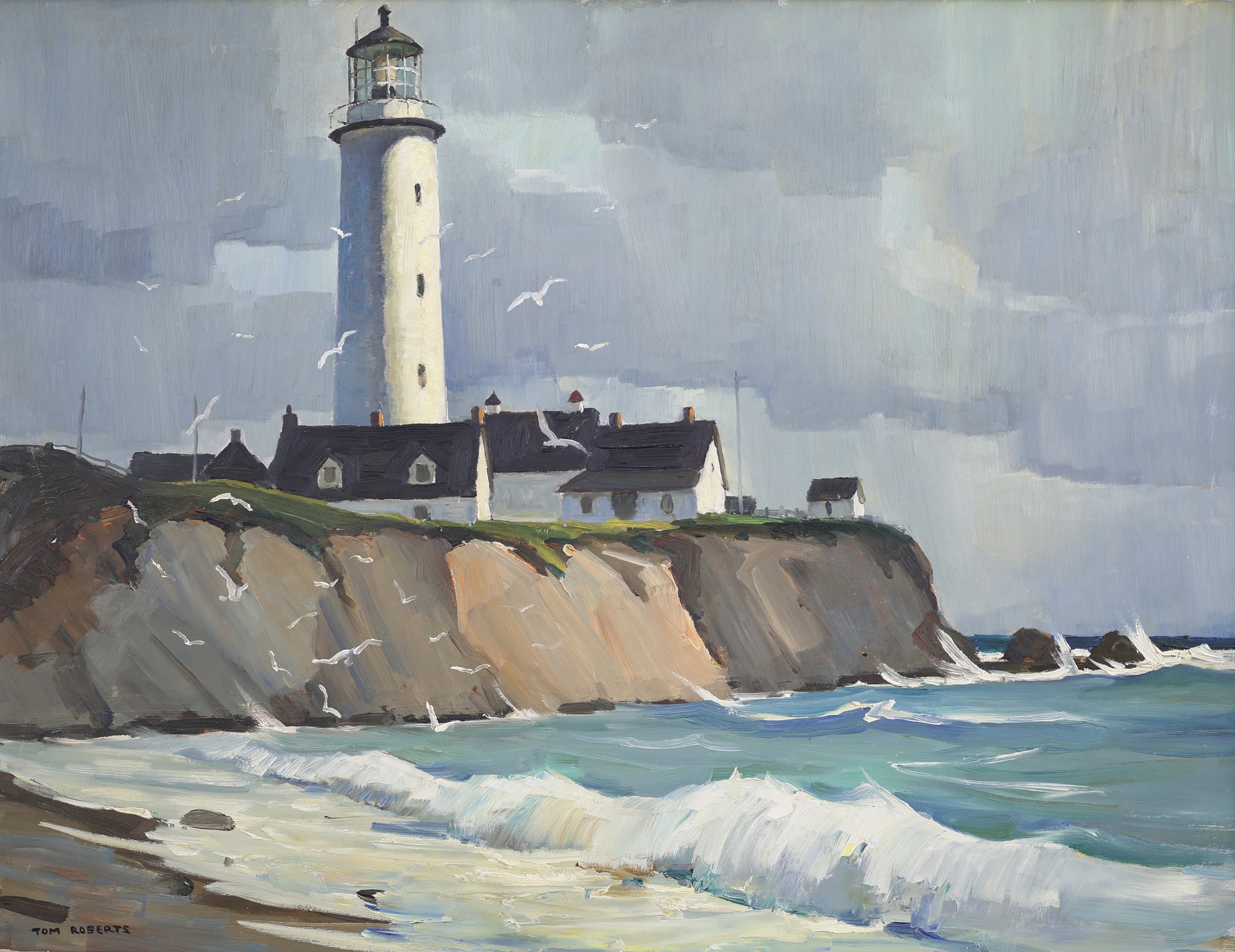
Tom Roberts; Cap de Rosier, Gaspe
Additionally, Roberts' extensive travels throughout Canada, including the Credit Valley, Caledon Hills, Georgian Bay, Haliburton District, Ottawa Valley, and the Laurentians in Quebec, inspired many of his paintings. He demonstrated versatility by using both oil and watercolours to depict landscapes and quaint town scenes.
Throughout the mid-1980s, Roberts held over thirty solo exhibitions, demonstrating the enduring popularity and admiration for his art, particularly in Toronto.


